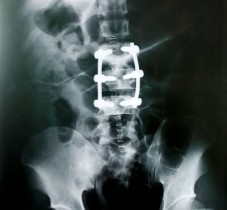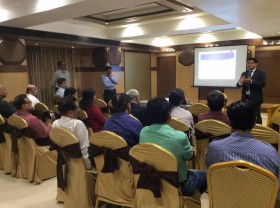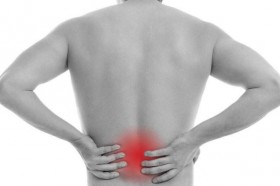1
1

Failed back surgery syndrome can be managed. True or False? Take the quiz to learn more.
Q1. how many different types of spine surgery you know?
1. One
2. Two
3. Three
4. Four
Answer: Four
There are mainly three types of back surgeries: Laminectomy, Discectomy, Spinal Fusion and minimally invasive Endoscopic spine surgery:
Laminectomy: Such surgery is performed when there is compression of one or more nerve roots due to bony growths from a lamina of vertebrae. The growth makes the spinal column narrow, resulting in compression of nerve root/roots. In this type of surgery, a small part of lamina bone is removed.
Discectomy: Such surgery is performed when there is compression of one or more nerve roots due to herniation of a vertebral disc. In Discectomy, a part of disc compressing the nerve is removed.
Spinal Fusion: Such surgery is performed when there are irreversible arthritic changes, or instability of the spine, between two or more vertebrae. Spinal Fusion is generally used to correct the problems related to small bones of the spine causing stenosis and spinal canal stenosis.
Q2. Back surgery completely cures back pain.
1. True
2. False
Answer: False
Back surgery may not cure back pain 100%. In fact, in many cases, back pain may come back after surgery. This is called "Failed Back surgery syndrome" (FBSS ). It is estimated that the incidence of FBSS is around 25-40%. In other cases, even if back pain is cured, the patient may complain of leg pain. However, the leg pain may wane after a few weeks. This purely depends on patient to patient and the severity of the spine condition.

Q3. What are the most severe risks of back surgery?
1. Blood clots in legs and lungs
2. Heart attack and stroke
3. Nerve damage lead to paralysis, weakness, sexual dysfunction, loss of bladder or bowel control.
4. All the above
Answer: All the above
Every surgery has some degree of risk. In case of back surgery, there may be a number of risks depending on the type of surgery. The most severe of these are the risks of blood clots in the legs and lungs, heart attack, stroke and nerve damage.
Q4. Failed back surgery syndrome can be managed.
1. True
2. False
Answer: True
Failed back surgery indicates recurrence of patients same back pain and leg pain or occurrence of new pain in back or leg which was not there before the surgery. In most cases the reason inadequate clearance of nerve compression, damage to the spinal structure like nerves or scar tissue formation. In cases of inadequate surgery patient might require re-do spine surgery. If there is damage to the structure it need further surgical or pain management treatment. However, in may cases, one can get over the pain by doing regular stretching exercises after the surgery. Nevertheless, if scar tissue has affected the nerve roots, there is little that exercise alone can do. You need to perform specialised treatment called Racz procedure of scar adhesiolysis via a Racz catheter insertion under fluoroscopic guidance at pain clinics.

If you need exercises as well to take pain relieving medicines for around a year, you must consult pain clinic for long term pain relief. In cases where pain do not respond to these therapies, you may need spinal cord stimulation implantation treatment. Also consult your doctor at pain clinic regarding means of combating the pain.

Q5. What symptoms of nerve compression are RED FLAG and needs urgent back?
1. Back pain
2. Sexual dysfunction
3. Loss of bladder or bowel control.
4. Pain or numbness going down the arms or legs.
Answer: Loss of bladder or bowel control.
If you have Loss of bladder or bowel control its a RED FLAG sign. This means there is severe compression and this needs immediate surgery to remove the compression. The endoscopic surgery is one of the most rewarding and curative at Spine and pain clinics. Early surgery within 2 days improves the outcome. As the time is prolonged the chances of permanent damage is increased.
Contact - 9699008890 or 9320027500 for appointment of our pain doctors













